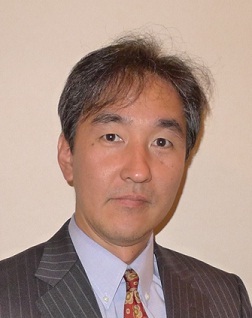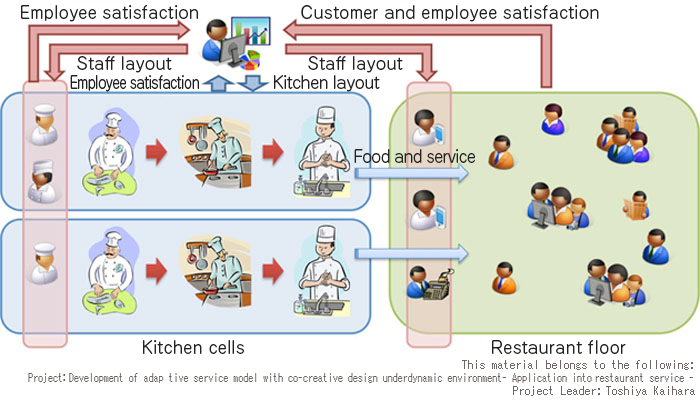Research Projects Selected in FY2012
< Solution-Oriented Service Science Research, Type A >
Development of adaptive service model with co-creative design under dynamic environment - Application into restaurant service -

[] Project Leader
Toshiya Kaihara
Professor, Graduate School of System Informatics, Kobe University
[] Targets
- Using restaurant service as an example and based on co-creative design, devising a service model that can adapt to environmental changes
- Attempting to extend the results of the adaptive service model to other service and manufacturing industries involving fixed assets production
- Through the above activities, eliminating inefficiencies in services, improving customer satisfaction and employee satisfaction, and increasing corporate profits
[] Approach
- Implement a service design loop of observation, analysis, design, and application.
- Based on the concept of cell systems, devise and formulate methodology for configuring kitchen layout and staff layout, following up with optimization and computer simulation experiments.
- Quantitatively assess the impact of environmental changes relating to restaurant service.
- Assess the views of each employee regarding customer satisfaction and assess employee satisfaction
- Expand to multiple restaurants and devise a universal layout generation methodology.
Demand fluctuations in goods-based services are not only affected by the external environment concerning value of use but are also strongly impacted by provider-side factors such as the speed and care of service provision. Efficiency of service provision is therefore one of the keys to raising customer satisfaction, making it necessary to consider a service model for achieving such improvement.
Using restaurant service as an example, this project will attempt to devise a service model that can adapt to environmental changes, with co-creative design as the basic concept, and that aims at creation of new value.
The specific aim is to reform on-site service focusing on kitchen and staff layout, raising customer satisfaction through new value provision. This will be done by applying the methodologies developed in manufacturing industries for which flexible manufacturing in terms of product variety and production quantity has become indispensable, and developing a flexible and efficient co-creative layout determination method for service provision. This will then be introduced in actual restaurants to verify its effectiveness.
In order that the results of this research may advance the new value creation process in services as a whole, research and development will be carried out for generalizing the methodology to other service and manufacturing industries involving fixed assets production.





